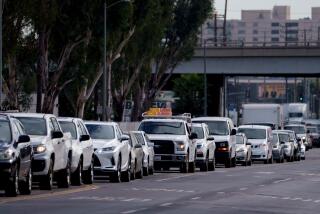Lost Vegas
Before there was the Strip, there was Fremont Street. Decades ago, as the East Coast mobsters began transforming Las Vegas from a small-time oasis of vice into Americaâs capital city of sin, visiting gamblers and vacationers stayed in Fremont Street motels like the Para-Dice and the Blue Angel. Now, crowded from view by the billion-dollar pleasure domes just a mile away, eastern Fremont Street is an all-but-forgotten fragment of history in a town habitually hostile to the past.
There are no tourists at this end of Fremont. Instead, this weathered string of vintage motels, pawnshops and check-cashing outlets is home to an assortment of people who are as invisible to the cityâs millions of visitors as is the street itself. Though police have stepped up patrols in the last couple of years, the area is still known as one of the most dangerous in downtown Vegas--a place crawling with feral losers in a city built on the idea that anyone can be a winner.
Amid the criminal types living there are a surprising number of ordinary families, optimistic immigrants and clean-living Christian evangelists. Some people wind up on Fremont Street at the end of their road, having nowhere else to go. For others itâs not a terminus but a place of transition: a gateway into America or a place to recover after a bad marriage, a lost job or bad decisions. People with histories of terrible hardship and bad behavior live next door to others whose tales are startlingly normal. Families from India run motels inhabited by prostitutes and job-hunting young couples, blue-collar workers and Bosnian refugees. Crackheads and alcoholics loiter on Sunday mornings in front of an African American church.
City developers have turned a couple of blocks at Fremontâs western end into a theme-park caricature of its former self, a frantically overlit string of nickel-slot casinos collectively dubbed âThe Fremont Street Experience.â But on eastern Fremont, itâs dark at night--except for the modest neon signs of the surviving motels.
More to Read
Sign up for The Wild
Weâll help you find the best places to hike, bike and run, as well as the perfect silent spots for meditation and yoga.
You may occasionally receive promotional content from the Los Angeles Times.






